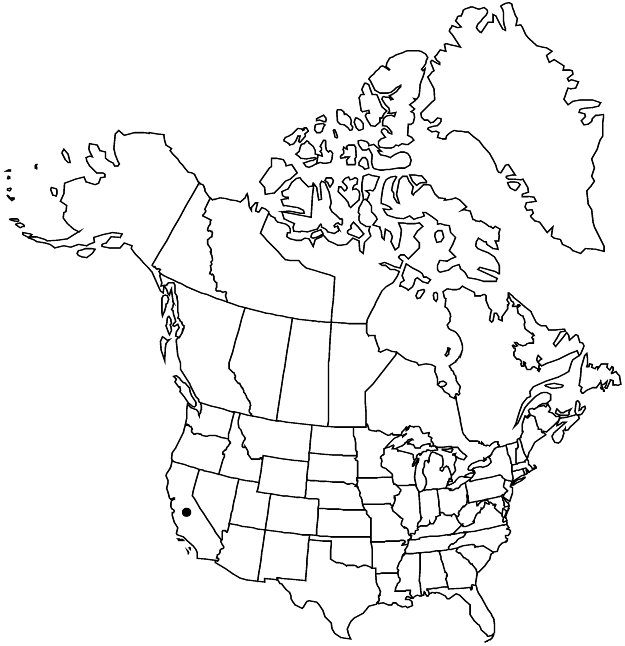Silene marmorensis
Madroño 15: 174, figs. 1–3. 1960.
Plants perennial; taproot long, stout; caudex branched, woody, producing several erect flowering shoots. Stems erect, simple proximal to inflorescence, 25–80 cm, puberulent, glandular distally. Leaves in 5–7 pairs proximal to inflorescence, sessile, blade lanceolate, narrowed to base, apex acute; proximal withering, becoming smaller in inflorescence, 2–5 cm × 3–10 mm, sparsely scabrous-pubescent on both surfaces. Inflorescences cymose, terminal, pedunculate, 1–3-flowered, open, bracteate, bracteolate, 10–25 cm, pubescence dense, hairs septate-glandular, septa colorless; cymes paired at each node; peduncle ascending, 1–3 cm; bracts and bracteoles leaflike, reduced distally to 2 mm. Pedicels not bent in fruit, 1/2 to equaling calyx. Flowers nocturnal; calyx prominently 10-veined, campanulate, 12–14 × 4–6 mm in flower, becoming obovate to obconic and to 10 mm broad in fruit, not contracted proximally around carpophore, margins dentate, glandular-pubescent, veins parallel, with pale commissures, lobes lanceolate-acuminate, 3–4 mm, membranous, margins narrow, apex blunt, veins green; corolla pale-pink, greenish abaxially, clawed, claw equaling calyx, limb oblong, deeply 2-lobed, 4–6 mm, appendages 2, oblong, ca. 1 mm; stamens equaling petals; stigmas 3, equaling petals. Capsules obovoid, equaling calyx and often splitting it at maturity, opening by 5 teeth; carpophore 3–4 mm. Seeds black, reniform, 2–3 mm, tuberculate; tubercles conic, in concentric rows. 2n = 48.
Phenology: Flowering summer.
Habitat: Oak woodlands, coniferous forests
Elevation: 800-1000 m
Distribution

Calif.
Discussion
Of conservation concern.
Silene marmorensis is closely related to S. bridgesii but has a narrower inflorescence, pedicels that are ascending instead of deflexed, and styles and stamens that are about equal to the petals. As in S. bridgesii and S. lemmonii, the flowers open at night and are probably moth-pollinated. The species is known only from Humboldt and Siskiyou counties.
Selected References
None.